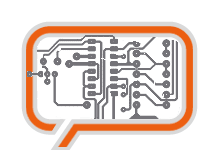A weblog focused on interesting circuits, ideas, schematics and other information about microelectronics and microcontrollers.
E-books
Disclaimer
Because I have not tested all electronic circuits mentioned on this pages, I cannot attest to their accuracy; therefore, I do not provide a warranty of any kind and cannot be held responsible in any manner.
DIY PIC Micro House Network [PicNET2 ]
An free and open-source house network based on PICs.
PIC is the core of this system. Many typologies of PIC can be used because they have at least one integrated USART, I tried the 16F88, 16F876,16F628 and all work perfectly, even using the internal oscillator (16F88). For the physical transfer of the data a transceiver frequently found in CAN networks is used (MCP2551 or Maxim, MAX3050 and others of the same family).
The use of this transceiver simplifies the SW because the rx-tx commutation is automatically managed from the chip. The protocol is completely different from the Can-Bus and designed to use the PIC resources, simplifying to the maximum maintaining as priority reliability of the received data. The BUS is made by a 4 wires cable, two wires for data and two for power. Use of differential driving, commonly used in industrial applications, guarantees a high level of noise immunity.
Default transmission parameters are: asynchronous 38400bps 8N1, speed can be either increased or decreased, distance being a limiting parameter for maximum allowed speed. Can specs provide the following limits 40m @ 1Mbs, 600m @ 115200bps, and so on, for more information take a look at CAN BUS.
